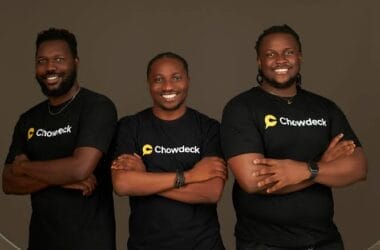Earlier this month, Microsoft’s flagship event, Microsoft Build was held and there were several interesting announcements including cloud APIs, new Windows features, improvements for voice assistants, and helpful new cloud services. There were also live demos.
Even though many of the new updates will not be available until later in the year, these are the very cool ones.
There is a new app called Your Phone that syncs Android phones and iPhones with Windows 10. The app can be used to send SMS, access photos, and view mobile notifications from your computer.
:format(webp)/cdn.vox-cdn.com/uploads/chorus_asset/file/10793499/yourphone.jpg)
With the app, users will no longer need to pull out phone every time. It is already in beta and is expected to launch publicly this fall.
Speak with Cortana through an Amazon Echo or reach Alexa through your Windows 10 PC.
At Microsoft Build, a partnership between Microsoft and Amazon was also announced. It makes each of their smart assistants available on one another’s platform. Even though was first announced last year, it wasn’t until Microsoft Build 2018 that we saw it in action.
Reps from Microsoft and Amazon demonstrated the integration on an Echo and a Surface. Those in attendance noted the integration isn’t perfectly natural: you have to say, “Alexa, open Cortana” or “Cortana, open Alexa” before you can speak with the other assistant — it’d be much more convenient if you could just say the assistant’s name to invoke them.
However, the assistants worked as normal once they were open, and the integration should be helpful for people who have them set up to handle different tasks.
The feature is in a limited beta, and not clear if consumers are allowed in yet. But Microsoft has a website up where you’ll be able to sign up to hear about progress on the Cortana / Alexa integration, and it’s presumably where you’ll want to go to hear about any wider beta.
Timeline
:format(webp)/cdn.vox-cdn.com/uploads/chorus_asset/file/10800921/timeline_ios_android.png)
Microsoft is bringing the Timeline to iOS and Android, too. So if you use the same apps on your phone and desktop, you’ll be able to pick something up on mobile that you started on a desktop. On Android, Timeline will be included as part of the Microsoft Launcher. On iOS, it’ll be a tab within the Edge browser.
For now, it’s largely Microsoft’s own apps that’ll sync their status between devices. But Microsoft is encouraging developers to start syncing their apps’ activity with the Timeline.
More money for developers than Apple or Google
Microsoft has introduced a massive incentive to encourage developers to develop apps for Microsoft Store. It is widely known that the company does not have enough apps when compared with the iOS and Google Play Stores.
Instead of collecting 30% of revenues from apps which is standard practice, Microsoft said it’ll only take a 5 percent cut, leaving developers with 95 percent of the money they bring in.
The 95 percent cut will only be available for consumer apps (games not included), and Microsoft will take a bigger cut if it helped advertise the app. But that’s still a much better deal than app developers can get elsewhere. And if app store fees were holding them back before, this should resolve any outstanding issues.
Next Windows
Another revelation at Build was that the next version of Windows will have a big change to how windows work: instead of each window representing a single app, you’ll be able to create a “set,” which is a single window that contains tabs from different apps. So for example, you could have one window (or “set”) that contains a tab for Microsoft Word, alongside tabs from a few different websites in Edge.
:format(webp)/cdn.vox-cdn.com/uploads/chorus_asset/file/10800335/Screen_Shot_2018_05_08_at_11.54.49_AM.png)
Verge reported the feature seems like a smart new option that should help people better organize their work. Microsoft is also looking into changing how Alt-Tab works, so that you can use the keyboard shortcut to switch through individual tabs, as well as windows.
Kinect is now a cloud service
Microsoft has revealed it is keeping Kinect alive. It will no longer be an accessory for the Xbox, instead, Microsoft is turning it into a cloud service. Developers will be able to send information from their own cameras and depth sensors up to Kinect in the cloud, have Microsoft process that information, and then send it back to the device.
According to media reports, the intention is to let hardware manufacturers create all kinds of Kinect-like cameras, which could be put to use in a much wider variety of ways than the failed Xbox accessory.






